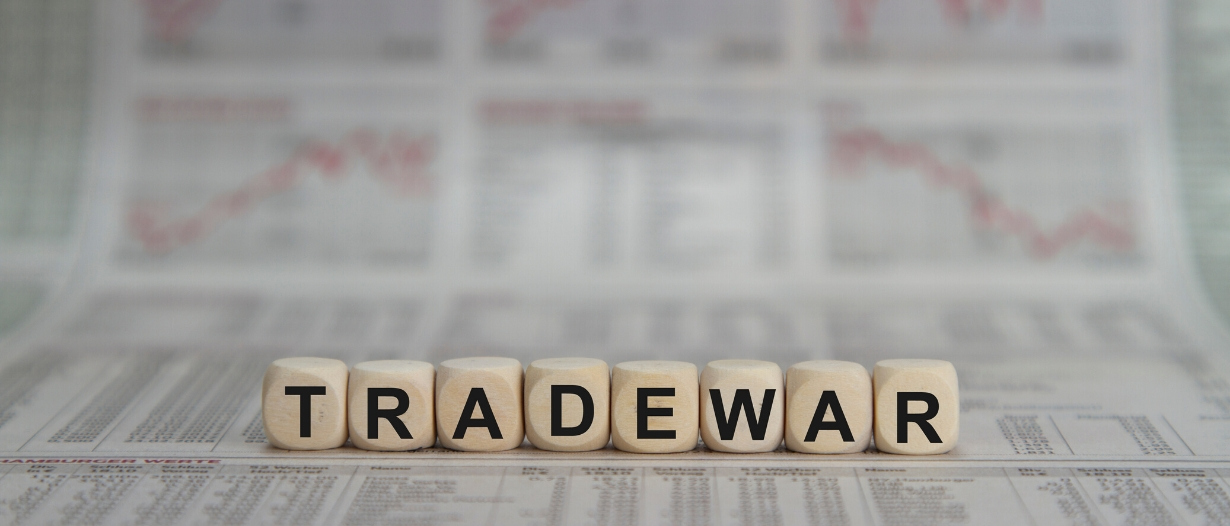A great deal of recent economic news, investor speculation, and central bank action can be traced to shifts in the trade space. This is an excellent learning opportunity.
How It All Began: Brexit plus a Trade War
Despite what economists, central bankers, and politicians may tell you, the evolution of the world economy is not a graceful one. Rarely does it feel cooperative, since getting a good look at how a single element impacts the whole can seem downright impossible. However, the past few days have shined a light on how trade helps shape the global economic landscape, make waves across markets, and set the tone for the future.
One could argue the first domino fell back when news of Brexit broke amid the results of the 2016 referendum. However, Boris Johnson’s rise to the position of prime minister is what’s agitated policymakers recently, as with his ascent came the very real possibility of the UK leaving the EU without a deal. The implications of such an eventuality are already seen to be troubling eurozone trade, as nervous investors and firms grapple with uncertainty.
Not only is construction of the EU budget made impossible without a clear statement from the UK, but trade has already slowed in key areas. Germany, often looked upon as a proxy for European economic health, has been threatening recession as of late, primarily due to a poor performance from it’s export-heavy manufacturers, a phenomenon that has been directly linked to “trade conflicts and […] Britain’s planned departure from the European Union”. Amid recessionary fears, EU policymakers have advised that Germany pursue expansionary fiscal policies.
This sequence of events provides an exciting, almost textbook illustration of economic theory at work, and within this sequence one can clearly pinpoint the effect that trade (or rather, a lack thereof) has on national economies. Political developments led to trade uncertainty, which led to a contraction in a foreign nation’s exports, resulting in poor growth prospects, which in turn led to a policy recommendation. Economics professors looking for a real-world example, look no further.
Germany is not the only nation that’s borne witness to such a pattern. The Sino-American trade war continues to rage, and much the same story can be told of the United States. The American yield curve has inverted, warning of a coming recession, and many blame the trade conflict with China.
Cutting Rates: A Panacea?
As global economies, suffering from trade tensions, find themselves in need of a lift, monetary authorities attempt to come to the rescue. The European Central Bank (ECB), particularly in reaction to the news out of Germany, has cut rates further into negative territory, from -0.4% to -0.5%, a record low. Following this cut, Japan’s central bank has been considering a similar move — perhaps a wise decision, considering that the Japanese yield curve has recently come dangerously close to inverting (shown below).
The Federal Reserve has cut rates. Investors will be expecting a cut somewhere in the realm of a quarter of a percentage point. While certainly an understandable (and indeed predictable) policy manoeuvre, it’s important to point out that should a recession indeed befall America, the Fed does not have a lot of wiggle room.
Prior to the 2008 financial crisis, rates sat at about 5.25% — high enough for the Fed to lower them and encourage growth. Now, the federal funds rate sits a full three percentage points lower, at 2.25%, meaning monetary policy won’t be as effective at curtailing a possible recession. That is, unless the Fed suddenly feels comfortable following in the ECB’s footsteps and diving into the negatives — as President Donald Trump has encouraged (perhaps President Trump might see the recession looming, and fears for his 2020 election prospects — it would be far from the first time that a politician’s desire to be re-elected has dictated policy).
Conclusion
In Europe, trade uncertainty surrounding Brexit led to such a drop in business confidence that the ECB needed to step in to avoid a potential recession — and even so, fears of a downturn continue to color the continent’s economy. Across the pond, a trade war has the Fed looking to cut rates again, as America too needs to avoid a recession.
These developments provide textbook examples of the profound impact of trade — not just on things like commodity prices and availability of goods, but on highly consequential matters of economic growth, and fiscal and monetary policy: things that affect the lives of everyone, not just those working in trade and trade finance.
The world economy has just reminded us of the importance of paying attention to trade. We would all do well to heed this lesson.
























